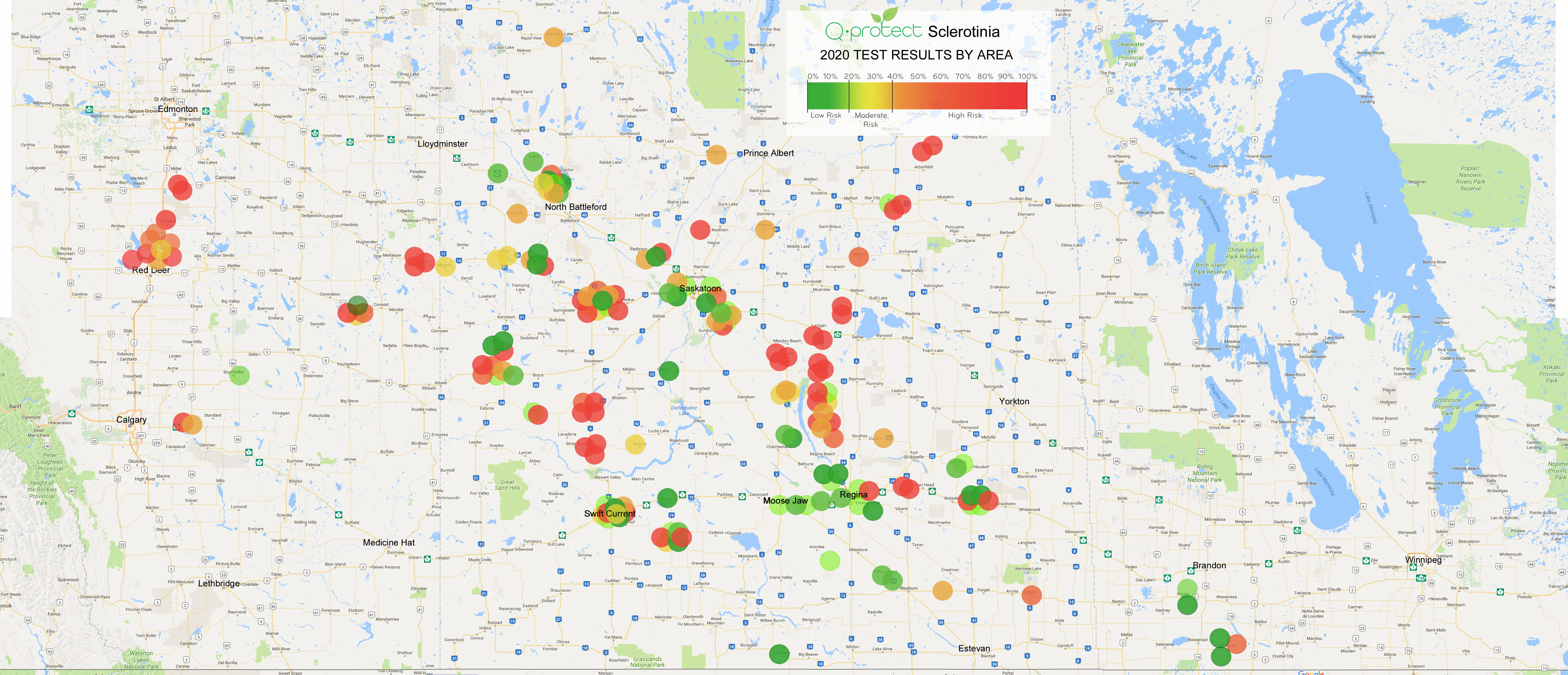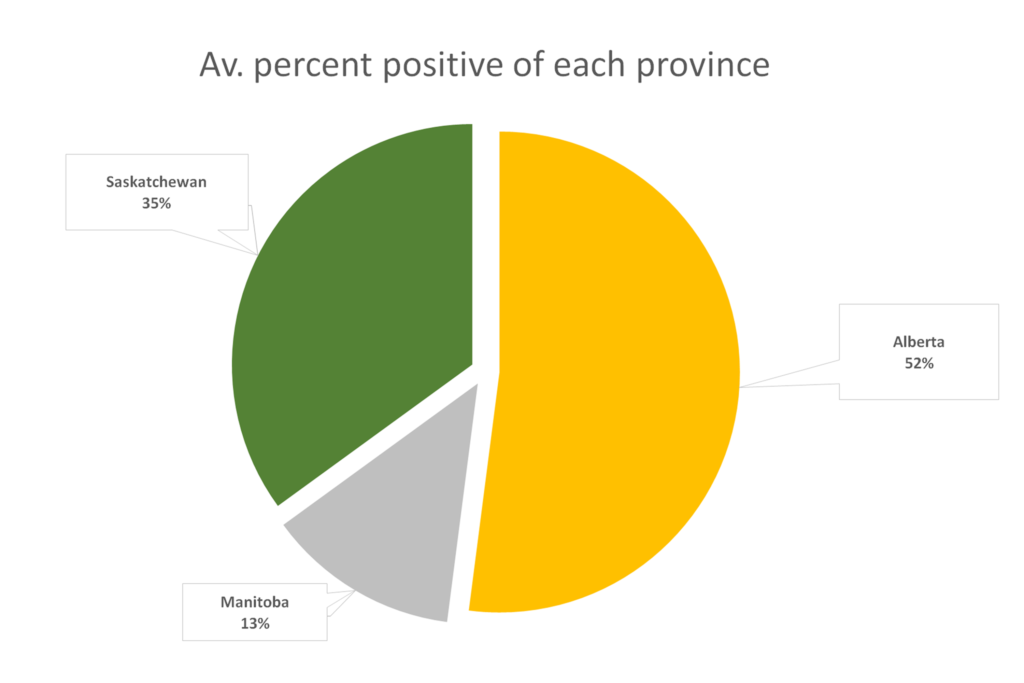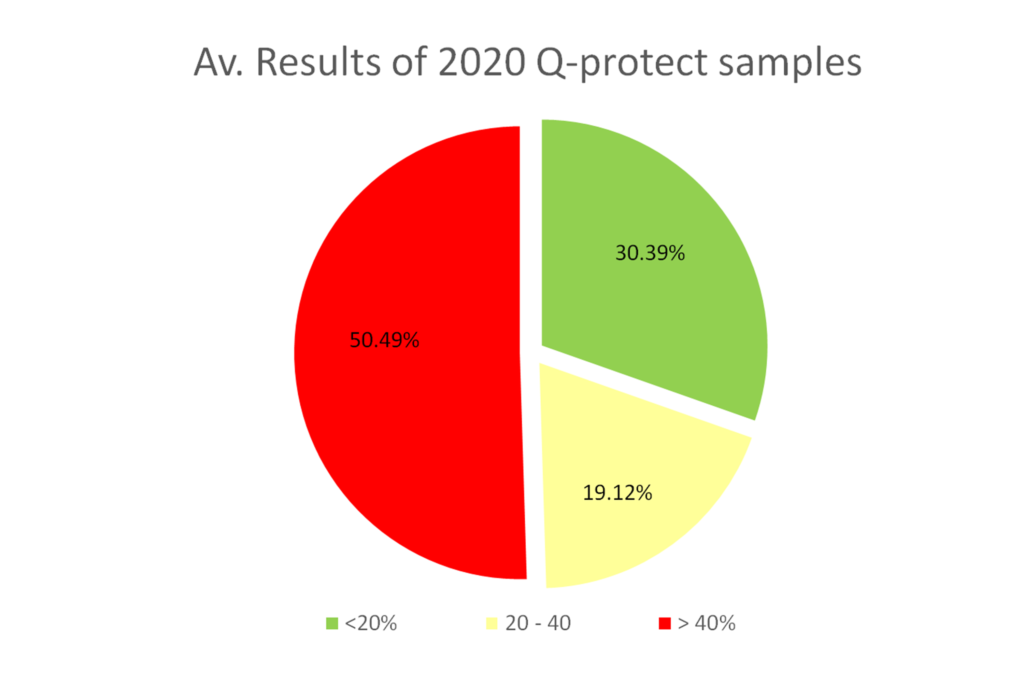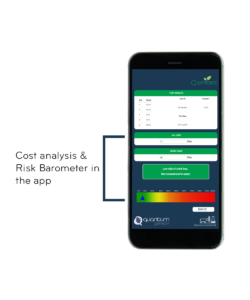2020 Q-protect Sclerotinia Results
August 7, 2020

Quantum Genetix’s Q-protect has completed its sixth season of sclerotinia testing this summer; focusing on giving farmers a tool to make more informed decision about their fungicide applications.
The 2020 season across Western Canada saw favourable conditions for sclerotinia to be present; however, some of the results seen throughout the Q-protect season paint an interesting picture.
Quantum Genetix’s risk barometer is a unique proprietary tool that was developed by Quantum Genetix from multi year field studies correlating presence of sclerotinia spores to future development of disease. The risk barometer consists of a percentage range across the top, which corresponds to the Overall % Positive Q-protect result, and three disease risk categories. The risk levels correspond to the risk of developing sclerotinia stem rot disease resulting in yield losses in excess of 7%. Results for Q-protect Sclerotinia are sent out with each fields overall level on this ranking system. Fields with Overall % Positive results below 20% are at a low risk of experiencing enough sclerotinia stem rot disease to cause yield losses greater than 7% and are unlikely to need a spray application. Fields with Overall % Positive results between 20% and 40% are at moderate risk and need monitoring or re-testing. Fields with Overall % Positive results greater than 40% are at high risk of incurring yield losses greater than 7% from sclerotinia stem rot and would need a fungicide application. The colour scale used in the risk barometer is also incorporated in Quantum Genetix annual sclerotinia map, which shows the Overall % Positive of fields by geographical region.

Of the fields tested this year, 30% were in the low risk category and approximately 20% were in the moderate risk category. The results illustrate the need for testing to avoid unnecessary fungicide costs and more effectively timing of necessary fungicide applications. In Saskatchewan the average Overall % Positive was 44.57% showing a moderate to high risk of disease (see graph 1 below). Even though conditions were extremely wet in Manitoba this year disease risk was quite low on samples that the Quantum Genetix laboratory received, being less than 20% positive on average. Overall, sclerotinia spore presence increased coming into the last two weeks in July as observed by an increase in the proportion of fields falling in the high risk category as a result of favourable environmental conditions for sclerotinia across Western Canada during this time.


Sclerotinia samples started coming into the laboratory for processing June 30th and continued until July 30. Throughout the duration of this Q-protect season we saw farmers using the test kits in a range of ways, not only to see if they have sclerotinia spore presence in crop but also to assess changes in spore presence and disease risk after rain events. Q-protect is a diagnostic and management tool that can be used across industry by farmers, agronomist, research scientist and industry representatives. This was evident again this year as we seen an increase in rainfall across Western Canada. With agronomists and consultants using Q-protect to test the efficacy of their fungicide by testing after an application, and to asses the potential damage of disease as some fields were inaccessible with spray planes being booked up to a week in advance. These results and insights allowed farmers and agronomist to be able to make a range of decisions based on an analytic and quantitative tool. By knowing the potential impact of disease and running a cost analysis on a spraying scenario, some farmers have been able to better target and obtain better value out of their fungicide application this 2020 season.
Not only does the Q-protect Sclerotinia testing kit give you results per field and testing site, it also gives farmers and agronomists access to their results on the Quantum Genetix App. In the app they have the ability to run each of their tested fields through a cost analysis and risk barometer, allowing them to see the economic impact of both the disease and a spray application.
2020 also saw an update to the Quantum Genetix application allowing agronomist to better manage their customers and their results. For more information, please visit our next blog post.
ag technology, Q-protect, Sclerotinia, DNA testing, disease, crop testing, Disease map, Cropping, farming, fungicide


